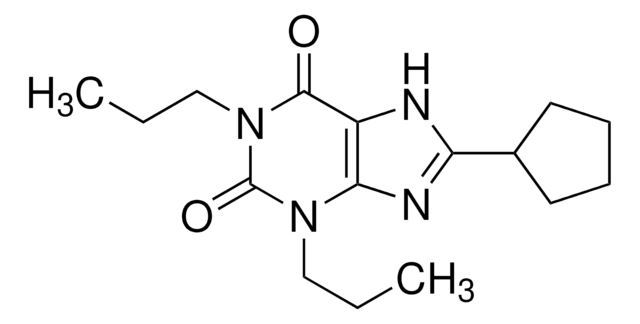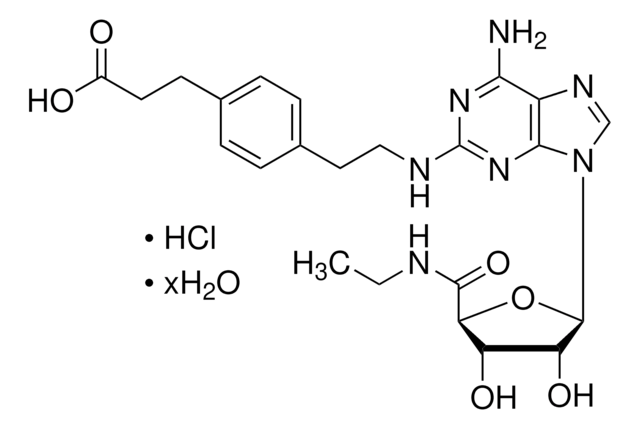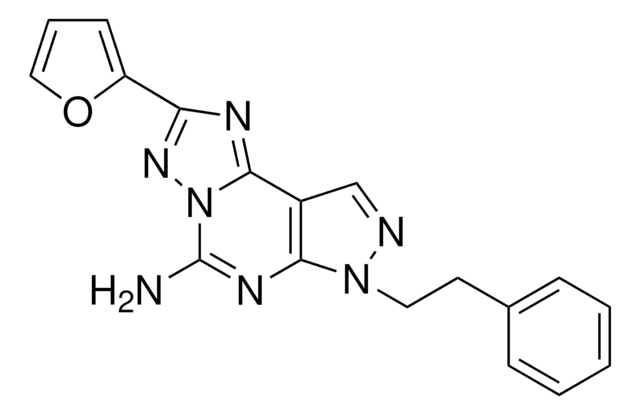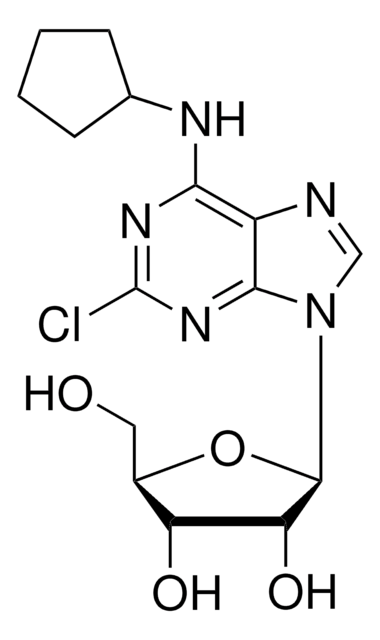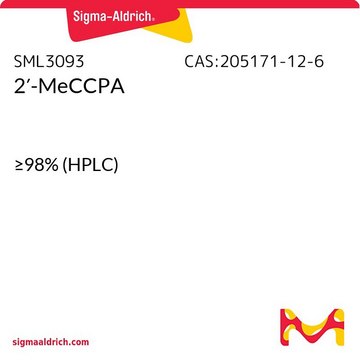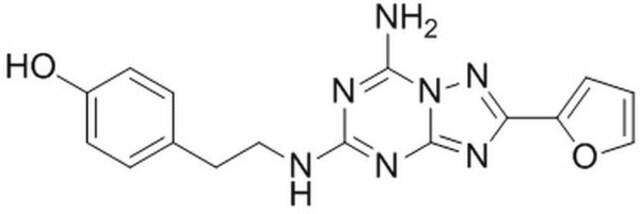D134
3,7-Dimethyl-1-propargylxanthine
≥98% (HPLC), powder
Synonym(s):
3,7-Dimethyl-1-(2-propynyl)xanthine, DMPX
About This Item
Recommended Products
assay
≥98% (HPLC)
form
powder
color
white to beige
solubility
DMSO: 15 mg/mL, clear
SMILES string
CN1C(=O)N(CC#C)C(=O)c2c1ncn2C
InChI
1S/C10H10N4O2/c1-4-5-14-9(15)7-8(11-6-12(7)2)13(3)10(14)16/h1,6H,5H2,2-3H3
InChI key
IORPOFJLSIHJOG-UHFFFAOYSA-N
Gene Information
human ... ADORA2A(135) , ADORA2B(136)
rat ... Adora1(29290) , Adora2a(25369)
Looking for similar products? Visit Product Comparison Guide
Application
- to study its effects on potential modulation of motor output elicited by epidural spinal stimulation (ESS)
- to study the role of A2a receptor in elevating cyclic adenosine monophosphate (cAMP) levels
- to study its effects on the cell viability of human gastric cancer cell line
Biochem/physiol Actions
signalword
Warning
hcodes
Hazard Classifications
Eye Irrit. 2 - Skin Irrit. 2 - STOT SE 3
target_organs
Respiratory system
Storage Class
11 - Combustible Solids
wgk_germany
WGK 3
ppe
dust mask type N95 (US), Eyeshields, Gloves
Certificates of Analysis (COA)
Search for Certificates of Analysis (COA) by entering the products Lot/Batch Number. Lot and Batch Numbers can be found on a product’s label following the words ‘Lot’ or ‘Batch’.
Already Own This Product?
Find documentation for the products that you have recently purchased in the Document Library.
Our team of scientists has experience in all areas of research including Life Science, Material Science, Chemical Synthesis, Chromatography, Analytical and many others.
Contact Technical Service